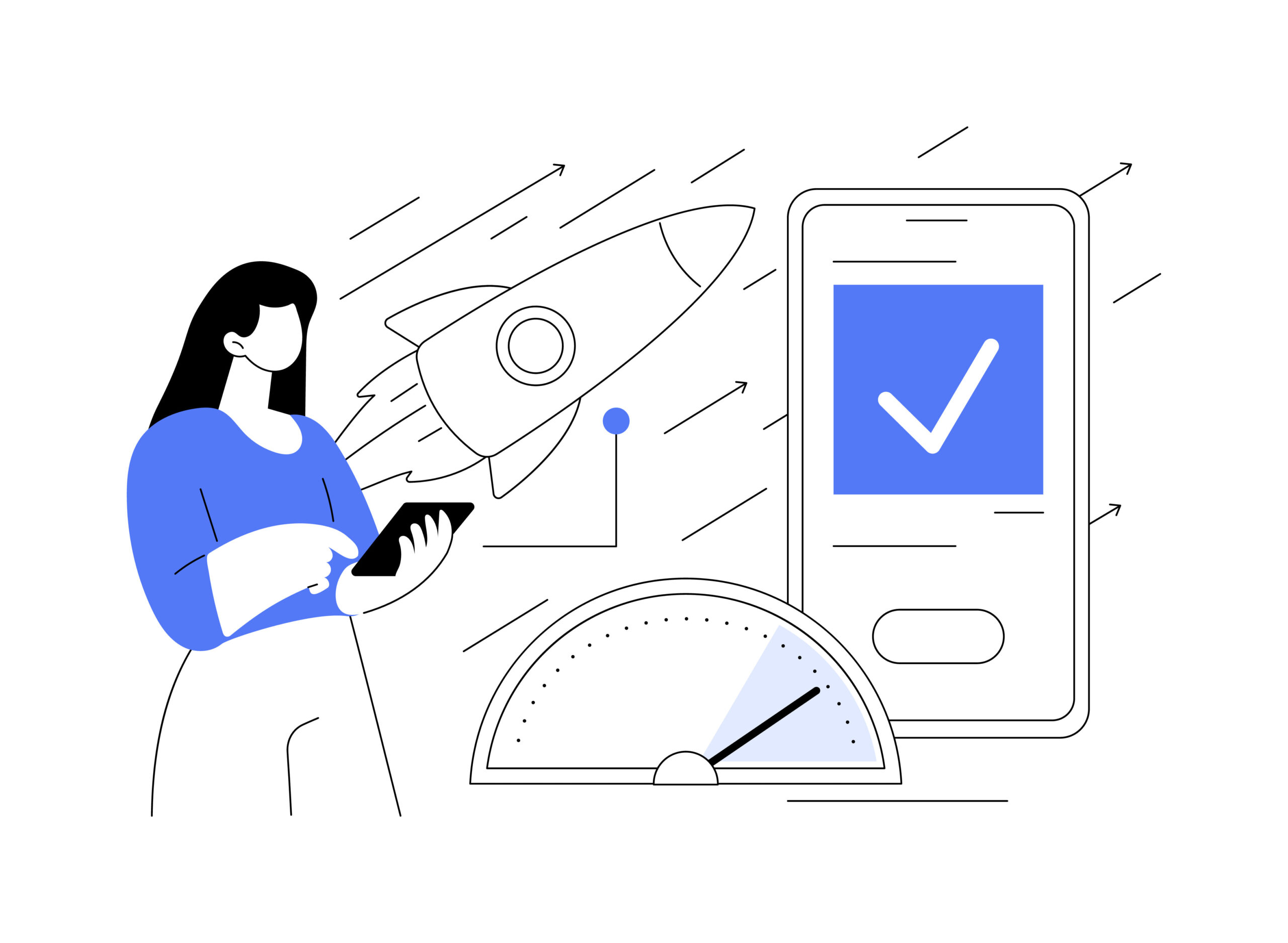Mobile Games and Esports
Exploring the Future of Mobile Esports: Trends, Predictions, and Strategies
Discover the future of mobile esports in Europe, talent, player strategies, industry trends, and barrier-breaking innovations, all driving excitement and growth for new and returning competitors alike.
Anúncios
Effortlessly connecting millions through gaming, mobile esports has revolutionized how people experience competition. As we examine the future of mobile esports in Europe, everyday players and passionate fans alike drive the next wave of innovation.
Continual advances in mobile hardware and network speeds have democratized esports, providing a diverse entry point for people of all ages. Regional tournaments and dynamic online leagues now regularly reach record numbers, inviting new businesses and talent to join the movement.
If you’re curious about what lies ahead—from grassroots player growth to billion-dollar markets—explore this article to better understand emerging trends and what you can do now to adapt.
Adopting Best Practices from Pro Esports Helps Aspiring Players Level Up Fast
Understanding frameworks from established esports scenes, such as communication techniques and practice routines, can help mobile players sharpen their skills more efficiently over time.
Many rising talents look to structured team bootcamps, which simulate tournament pressure and promote adaptability. In these controlled environments, participants track performance, review footage, and set clear improvement goals for each session.
In-Game Communication Drives Team Success
Effective communication—short verbal cues paired with on-screen markers—enables teammates to synchronize attacks and adapt on the fly. A basic example: “Push left,” said as the left lane opens, signals team focus.
Teams often assign a dedicated shot-caller who manages overall strategy while players offer precise, time-stamped updates (like “enemy top, 15 seconds”). This layered style prevents confusion and allows for seamless transitions mid-game.
By mirroring these methods, amateur squads reduce hesitation, leading to sharper tactical decisions and more consistent match results.
Daily Review Routines Cut Improvement Time
Recording gameplay on a smartphone, then tagging mistakes and highlight moments, reveals subtle habits—helping players create focused practice tasks.
Mini checklists before each session (“Check map awareness,” “Communicate cooldowns”) establish good routines while keeping practice enjoyable.
Squads report that reviewing two matches nightly leads to better synergy and improved mechanics within just a week, especially when paired with feedback from teammates or coaches.
| Practice Element | Pro Method | Mobile Example | Takeaway |
|---|---|---|---|
| Strategy Sessions | Whiteboard plans with coach | Group chat with replays | Discuss tactics before matches |
| Feedback Systems | Daily video reviews | Screen-captured highlights | Spot patterns and set targets |
| Warmups | Team training drills | Solo aim maps, 10 minutes | Build muscle memory efficiently |
| Tournament Prep | Scrimming opponents | Find open lobbies fast | Adapt strategies quickly |
| Communication | Calls with specific code words | Short, actionable commands | Reduce in-game confusion |
Player Recruitment and Talent Scouting Unlock Hidden Potential in Untapped Regions
Diversifying recruitment broadens talent pools and sparks interest among underrepresented groups. Concrete outreach steps and inclusive tournaments shape the future of mobile esports in Europe.
Organizations watch for leadership, adaptability, and digital etiquette in their prospects. A player who smoothly rallies a team after a setback quickly earns attention from regional managers and scouts.
Building Trust from the First Contact
Initial outreach sets the tone: “We noticed your duel wins—would you like to try our open scrims?” Personalized messages encourage dialogue and respond to players’ unique achievements.
Group introductions—like offering a group chat tour and sharing success stories from similar backgrounds—help break the ice. Players feel welcomed and understood, strengthening recruitment pipelines significantly.
- Start outreach with positive recognition, laying a foundation for trust and ongoing communication.
- Ask permission to share a prospect’s highlights with the team, building a sense of agency for each player.
- Offer flexible tryouts at different times to accommodate school or work; this widens your prospective base.
- Follow up after every session, clarifying how feedback is used for improvement rather than exclusion.
- Create short, public celebration posts about each participant’s growth, reinforcing community and visibility.
These steps help organizations treat individuals as future teammates, not statistics—attracting passionate new talent eager to join the action.
Structuring Fair Tryouts that Encourage Growth
Tryout organizers set criteria upfront—mechanics, teamwork, attitude—preventing bias and clarifying progress goals.
- Provide scoring rubrics to transparently define success in tryouts, allowing participants to focus on growing key skills.
- Mix new faces and seasoned players in each session for reciprocal learning opportunities, improving group adaptation in real-world matches.
- Encourage brief peer reviews, where both current members and new recruits share what felt supportive or challenging.
- Rotate mentors every round, promoting exposure to varied communication styles and strategies.
- Decompress after sessions by asking, “What one thing do you want to work on next?”—transforming each tryout into a mini learning lab.
Such approaches level the playing field and make every event a stepping stone towards regional and even international recognition.
Leveraging Infrastructure Investments for Consistent Competitive Experiences
Reliable networks and consistent tournament platforms give players the tools to improve without lag or hardware setbacks. Major upgrades fuel everything from smooth play to bigger event viewership.
When event organizers mirror standards found in console or PC esports, like strict anti-cheat protocols and fair match environments, mobile players gain confidence in the fairness of the ecosystem.
Transitioning to Tiered Event Platforms
Hosting qualifiers at local game lounges, then semi-finals on cloud platforms, means more people compete with fewer technical disruptions. Event hosts offer clear schedules and transparent rules for every league stage.
Upgrade organizers share phrases like, “Please test your connection now,” and set connection standards: 10 Mbps down, 5 Mbps up minimum. Everyone knows where they stand, reducing stress.
With every transparent platform improvement, the future of mobile esports in Europe solidifies, paving the way for larger international events that feature seamless connectivity and more reliable rankings for all participants.
Adopting Universal Anti-Cheat Protocols Prevents Unfair Advantages
Mobile organizers use trusted anti-cheat software, requiring players to verify device settings before every match. “Please run your device scan now,” becomes as routine as game warmups.
Publishing real-time server status dashboards reassures everyone, while a clear appeals process allows contested outcomes to be fairly reviewed—players say this keeps competition focused on skill rather than luck.
These systems create an environment where players develop their abilities knowing that results genuinely reflect their effort and teamwork, rather than technical loopholes.
Driving Growth with Hybrid Monetization and Fan Engagement Strategies
Players and teams who embrace flexible funding—from micro-donations to official merchandise—build more sustainable careers. Engaging fans with real stories and interactive experiences grows loyal followings and generates new opportunities.
Mixing Sponsorships and Player-Owned Brands
Teams run small campaigns on social platforms: “Support our journey—grab our limited badge!” Merch rollouts that tie into milestones (e.g., 10,000 followers) prompt community celebration and shared ownership.
Hybrid sponsorship deals—blending traditional sports backers with technology startups—give teams diverse revenue streams. Teams record short behind-the-scenes videos, sharing how the support goes directly to training and travel costs.
Fans relate to direct impact: a player posts, “Thanks for your help—we reached the next qualifier thanks to your shares and donations!” That interaction transforms viewers into long-term supporters, building the future of mobile esports in Europe.
Developing Interactive Viewing Experiences
Streamers create mini-games for live viewers: “Guess our next move and win in-game credits!” Integrated emotes, polls, and leaderboard shoutouts turn passive audiences into active participants.
Partner apps highlight all-star moments mid-broadcast and let fans replay key plays. Each engagement layer deepens investment: players say, “I always know when my fans are watching–my chat explodes during clutch moments!”
Teams that collect and share fan art or commentary further personalize their brand. Emphasizing these moments creates a lively ecosystem, keeping mobile esports at the forefront of digital entertainment.
Innovating Accessibility and Inclusion for Widespread Adoption
Accessible tournaments and inclusive community channels help remove barriers—both technical and cultural—for participants with diverse backgrounds. The most resilient scenes celebrate every player, not just the winners.
Game organizers translate rules and commentary into multiple languages, post comprehensive emoji guides, and use visual cues for important updates, reaching larger and more varied audiences.
Customizing Formats for Varied Device Capabilities
Event hosts list minimum phone specs, but they also offer “Lite League” alternatives where gameplay is optimized for older devices. This makes the entry bar lower and lets more people compete.
Dedicated tech support teams offer clear tutorials: “Tap here to adjust graphics; restart if lag spikes.” These scripts are pinned for new registrants, empowering quick self-help and reducing frustration.
Success examples showcase players with budget phones placing among the top finishers. Every league winner stories includes device specs, proving that dedication trumps hardware in mobile esports progress.
Promoting Gender Balance and Welcoming New Voices
Organizers invite women to host events and serve as commentators, increasing representation on public channels. Newcomers receive mentor matches, where veterans encourage first-timers by modeling supportive chat language and positive gestures.
Leaderboards spotlight achievements of individuals from varied backgrounds. Short player bios, like “Maria, 22, led her team with 23 assists, studies software engineering,” demonstrate that mobile esports recognizes talent everywhere.
Inclusivity statements read at opening ceremonies reinforce expectations for respectful play and constructive feedback. By normalizing supportive tone, organizers cultivate an environment where every teammate feels comfortable to contribute.
Elevating Game Design to Boost Long-Term Player Retention
Developers who adapt game mechanics for evolving esports environments will keep players engaged for years, not months. Refined matchmaking, new seasonal modes, and creative reward systems all make staying power a reality.
Inspired by feedback loops, some games introduce “community challenge” features. Teams say, “This patch was a request—thanks for voting,” making player input a core part of ongoing development and retention strategies.
Introducing Dynamic Seasonal Playlists
Rotating maps, timed-only tournaments, and role-limited matches keep the experience feeling fresh. Organizers proactively post, “New playlist drops Friday—vote for your favorite,” integrating fan preferences into planning.
Short cycles prevent burnout and encourage experimentation with new tactics. Fans remain invested, eager to log in for whatever surprise the next event brings.
Visible countdowns and social calendar reminders drive daily engagement. Teams establish short-term squad goals: “Let’s finish top 3 in this week’s playlist,” fostering friendly competition and steady improvement.
Rewarding Long-Term Commitment with Distinctive Progress Markers
Progress badges, limited-edition avatars, and public leaderboards highlight dedication. Profiles display unique stats, like “200+ matches over three months,” reinforcing every player’s investment in the future of mobile esports in Europe.
Cross-game rewards—where skills or trophies in one title unlock in-game bonuses elsewhere—keep the community connected even as new releases drop.
Teams encourage each other, saying, “Set your three-month streak badge today.” Such visible milestones ignite excitement and healthy competition while incentivizing regular play.
Looking Ahead: Channeling Momentum Toward Mobile Esports Growth
The journey to a dynamic, fair, and inclusive competitive gaming landscape calls for creative cooperation and bold experimentation. Embracing strong talent pipelines, rigorous training, and player-first platforms transforms everyday ambition into lasting results.
As scene leaders double down on transparency, proactive engagement, and consistent investment, the future of mobile esports in Europe leaps from aspiration to action. Every inclusive event and innovative partnership paves the way for deeper player development.
Advocating accessible structures and rewarding authentic effort will inspire a new generation of passionate participants. By implementing these strategies, the next era of mobile esports will offer more opportunity, diversity, and sustainable excitement for everyone involved.
Em Alta

Conheça os aplicativos para limpar a galeria sem estresse!
Descubra o melhor app para limpar a galeria e liberar espaço no celular com praticidade, segurança e sem excluir suas fotos importantes.
Continue lendo



